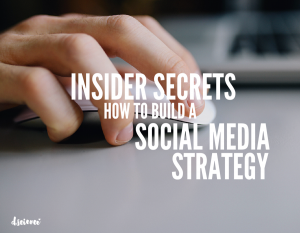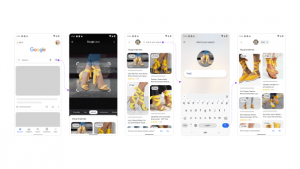Did you know that 25 percent of consumers who complain to brands on Facebook or Twitter expect a response within an hour, according to HubSpot? This seems a bit unrealistic, right? Shockingly enough, it might not be. You’ll likely lose respect and loyalty from a client if their questions and complaints aren’t dealt with in a short window of time.

Photo by Toshihiro Gamo via Flickr
Nowadays, customers even expect a response when complimenting a company. A few months back, I received a free salad from the organic fast-food restaurant SweetGreen due to a longer wait for chicken on my guacamole greens. I was so ecstatic by the phenomenal customer service that I tweeted at their corporate handle praising their response to a slightly extended wait time for my Friday night meal.
In return to my testimonial? Radio silence. I kept refreshing my Twitter feed assuming they’d respond in some manner, perhaps “favorite” my tweet, retweet it, or reply saying “Anytime!” but…nothing. I was left feeling discouraged (although I won’t lie, I’m still a regular salad-eating customer).
Luckily, this was a positive scenario, so I didn’t lose faith in the business, but imagine if my tweet was about a negative experience. Let’s say they ran out of chicken altogether and did nothing to ease my frustration. If a response was not made on Twitter to a negative review, then my faith and loyalty to the business would be lost.
Morton’s Steakhouse knows what I’m talking about. A while back, the upscale steak chain delivered a joking customer a free steak at an airport. The tweeter wrote, “Hey @Mortons – can you meet me at Newark airport with a porterhouse when I land in two hours? K, thanks.” And, to the customer’s surprise, Morton’s did just that!
The result? An explosion of PR coverage and positive press for the steak chain. The fact that this occurred in 2011 and I’m still gushing over it just shows how momentous positive social customer service can be for a business’ reputation.
Follow these steps to build loyal customers through social media:
Step #1: Assign A Social Media First-Responder
I understand that you might not have the budget to hire a new employee for this role, but you do need a socially active employee who is capable of responding and monitoring each one of your brand’s social channels.
As I explained above, customers (and leads) expect answers in real-time. A long lag between a tweet at your handle and your response will lead to high levels of frustration from your previously happy customer. Your social media first-responder should have notifications coming into their phone, and the ability to check in on each channel several times per day.
Step #2: Create A Troubleshooting Library
Common issues are going to occur no matter what industry you’re in, whether it be a bug in your software or a complaint about the delivery time for an e-commerce purchase. Make a detailed library of common occurrences with notes on how to handle each scenario. If the issue can’t be resolved overnight, let the user know this. Keep the lines of communication active, and send a private message with details on next steps (perhaps getting them in touch with support or scheduling a phone call to resolve the problem).
Step #3: Turn Your Customers Into Brand Ambassadors Through Creative Tactics
You also need to think about the customers that aren’t likely to engage with your brand unless they have an issue. The last thing you want is people to only contact you under tense circumstances. How do you combat this? Turn on those creative juices and run intriguing contests and giveaways. Start a hashtag movement, ask engaging questions, and use humor through your social copy, images, and videos.
If you can spur your followers to positively interact with your brand, they’ll graduate from happy customers to brand promoters. Check out the adorable contest Delta Faucet is running below:
Step #4: Create A List Of Your Customers & Engage With Them Regularly
Keep track of who engages with your brand, who actively follows you, and the customers that spend lots of time on social media (which is likely the majority of them). Create lists of these customers, and return the love to them by retweeting or sharing their content, liking their posts, and commenting from time to time to show them how awesome they are. Making your customers feel loved goes a long way, although tread lightly with less happy customers; overdoing it with regular engagement might push them over the edge (nobody likes a suck-up!).
The most important takeaway? NEVER ignore any comment posted to one of your social accounts. Whether it be praising your brand or critiquing it, there’s no need to create brand detractors!
(171)
Report Post








